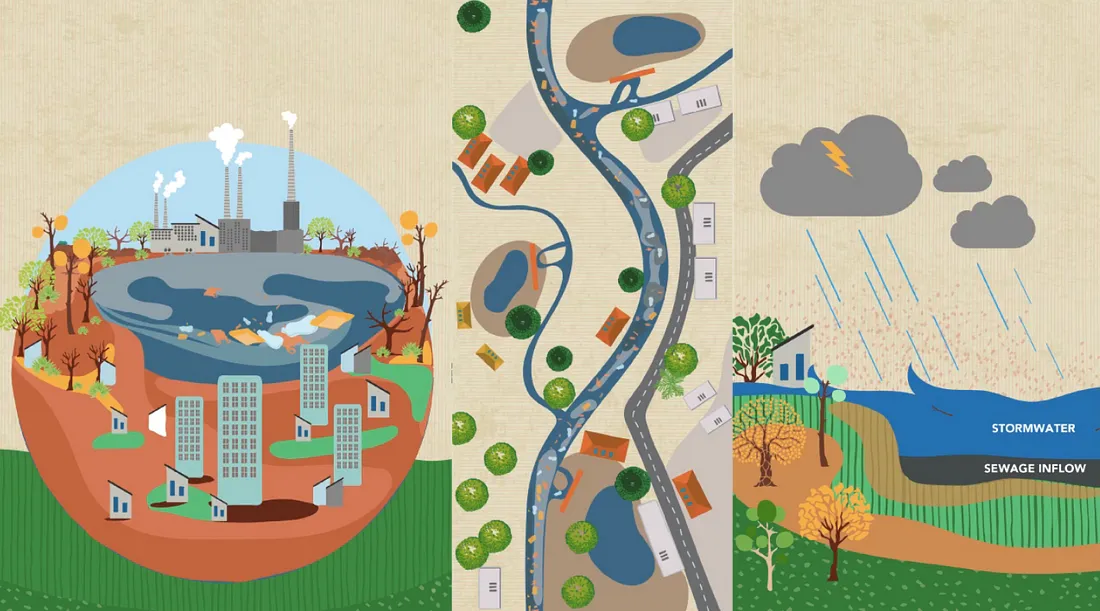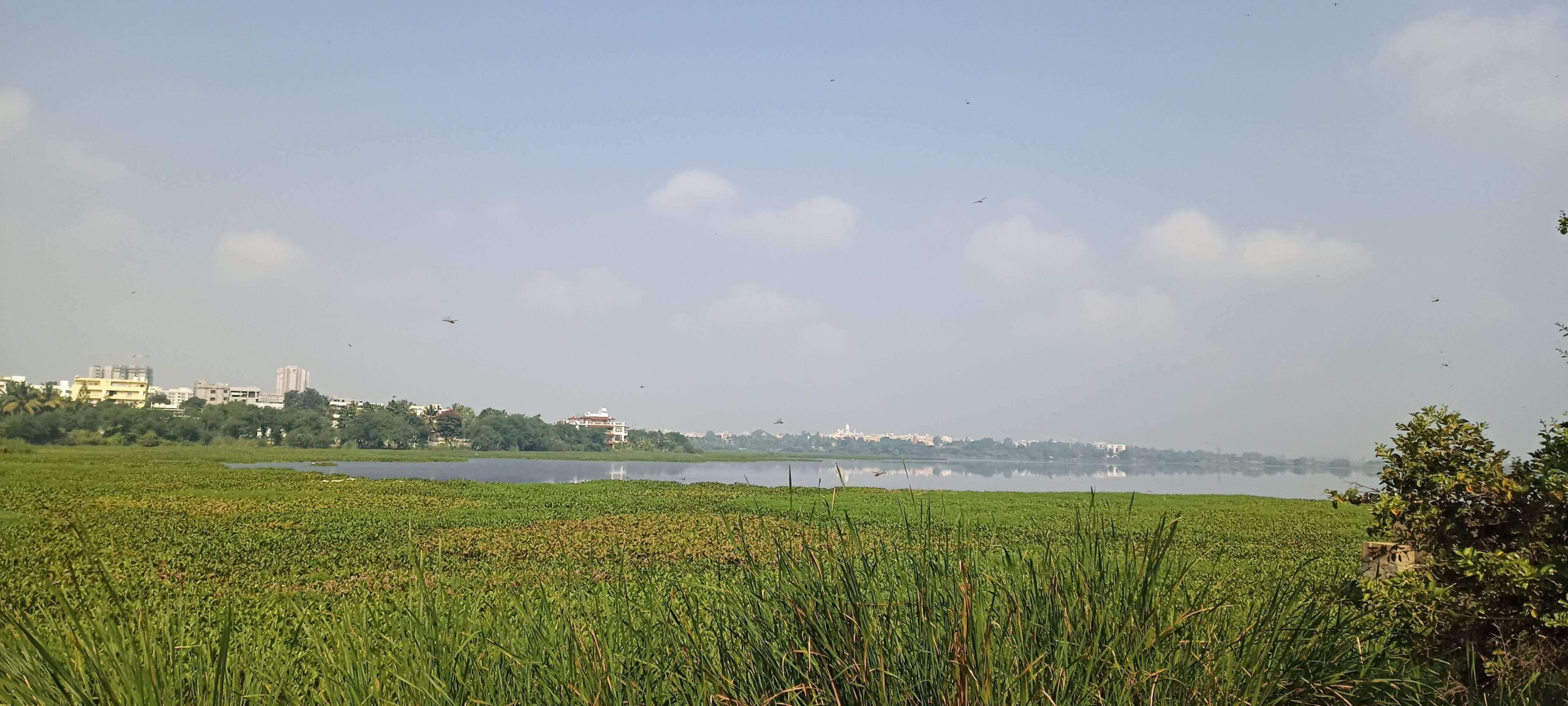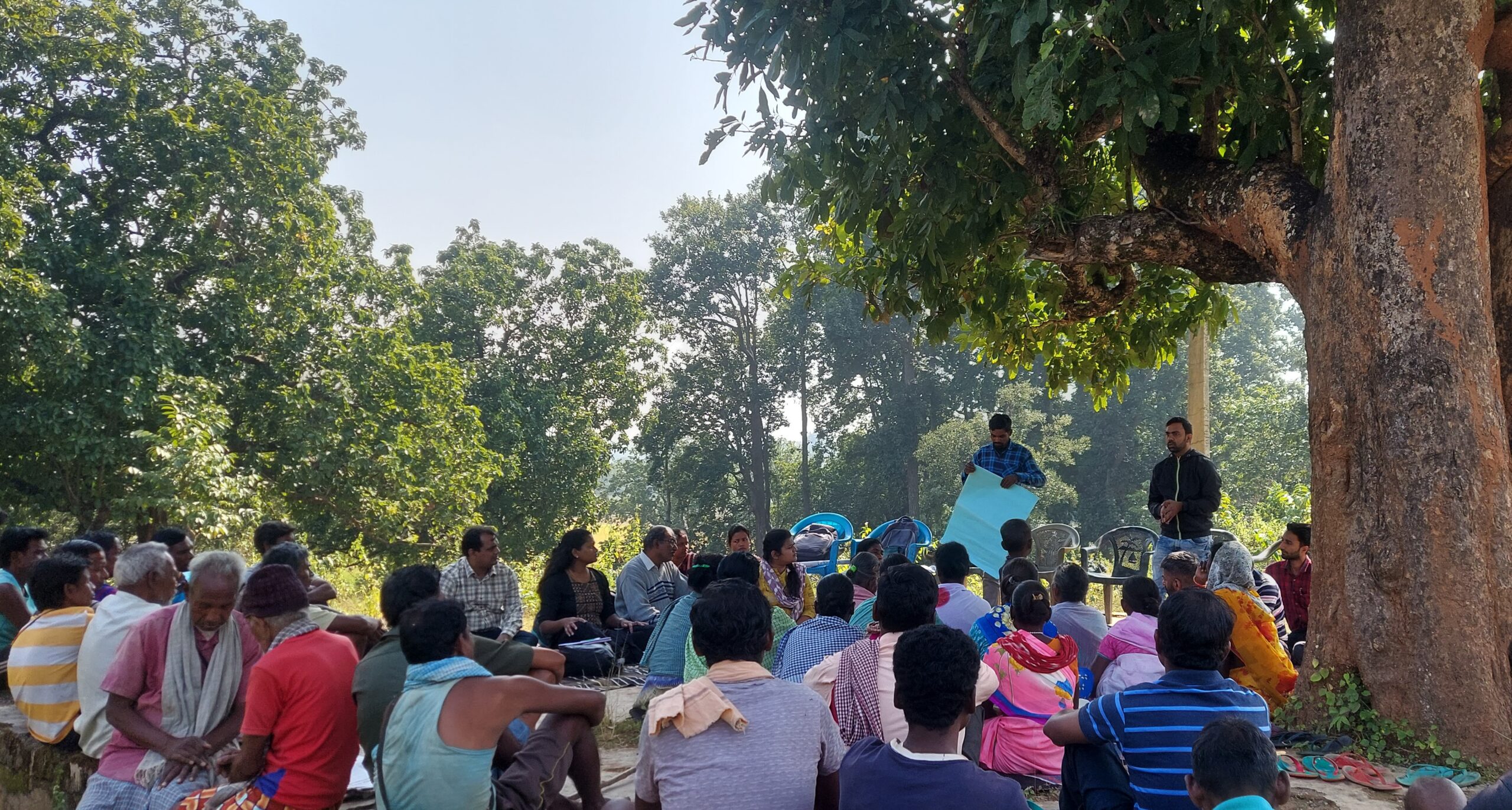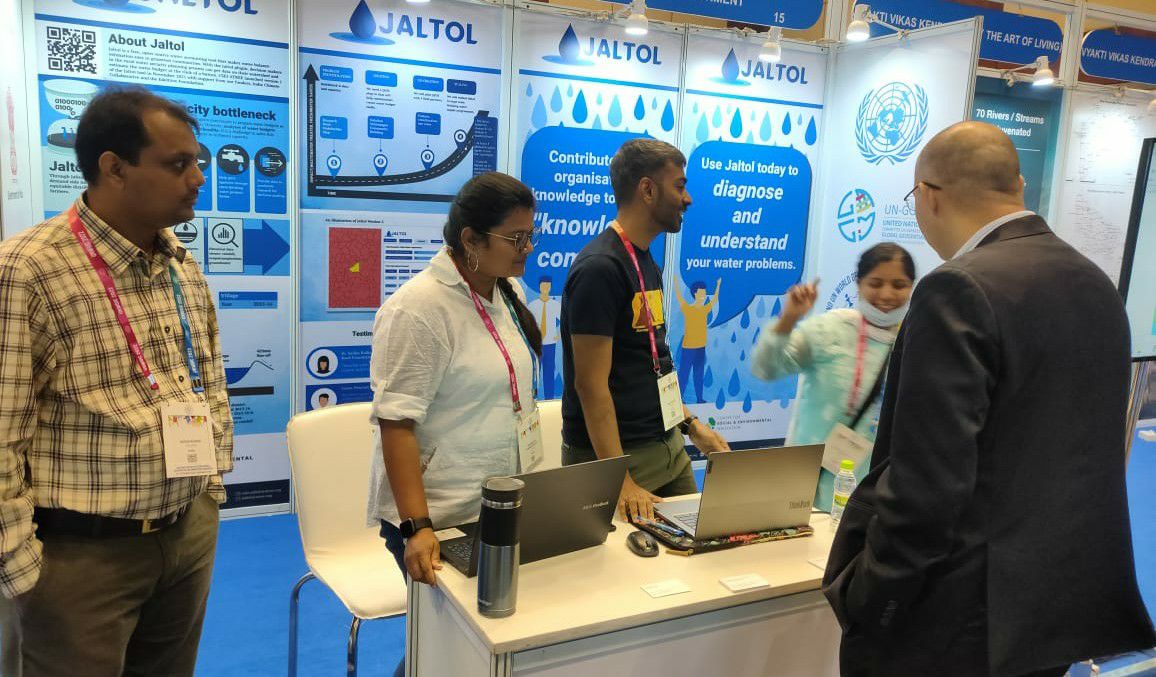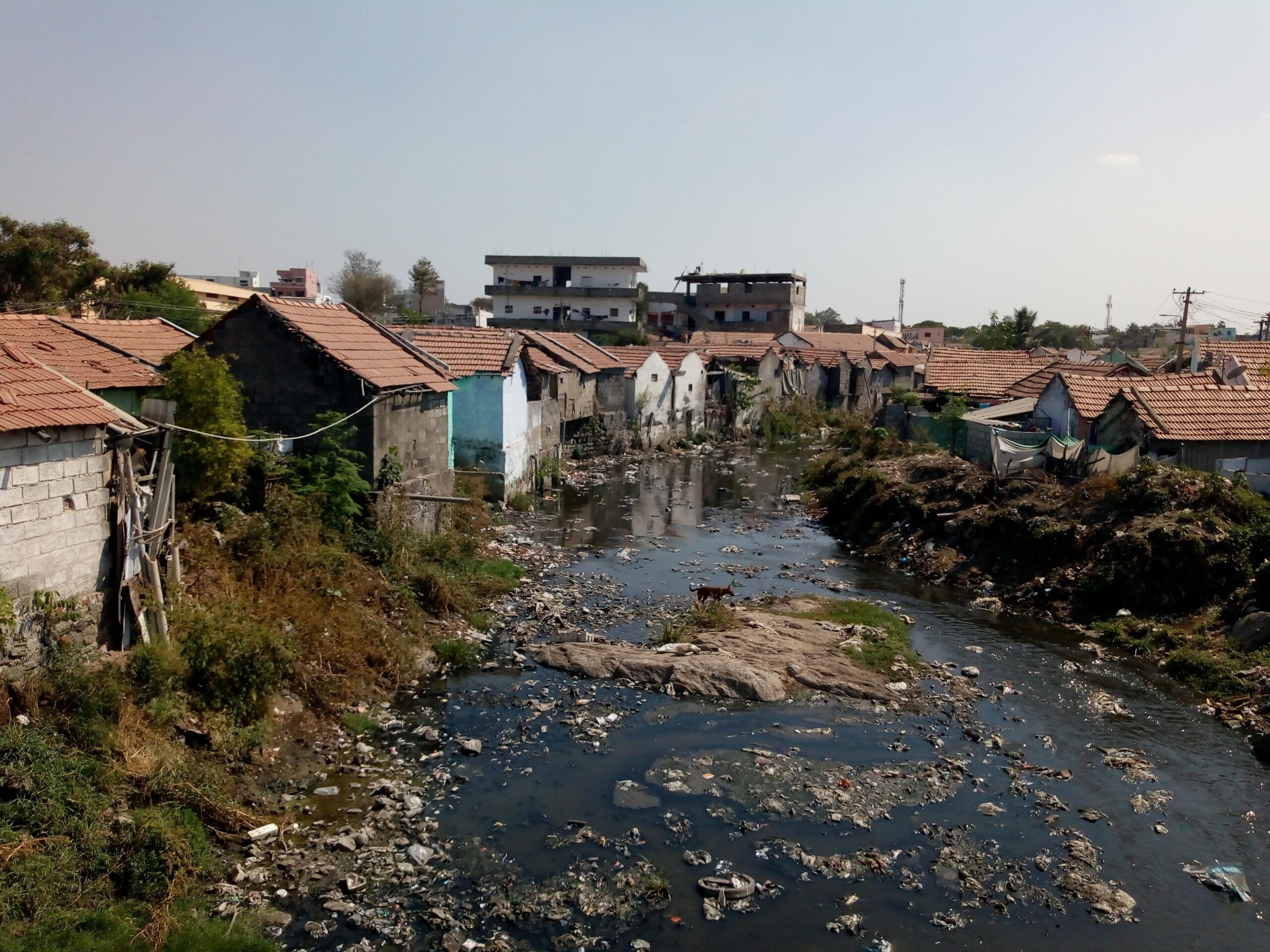Soak Up the Rain: How a ‘Sponge City’ Makes Urban Areas Climate Resilient
Indian cities are rapidly urbanising and becoming more vulnerable to floods. Credit: Dibakar Roy on Unsplash
Bengaluru, India’s high-tech IT capital, was in deep water even before the arrival of the southwest monsoon this year. Thunderstorms with heavy rain lashed the city since mid-May leading to flash floods and even the death of a 22-year-old woman who got stuck in a flooded underpass. These tragic events have become horribly familiar in a city that has grown much faster than it can cope.
The newly-elected Karnataka government has sought a ‘long-term plan’ on preventing waterlogging. Some fundamental next steps are clear – drains must be unclogged on time and renovated, construction on low-lying areas needs to be regulated, and wastewater must be treated and reused so that they don’t end up in our lakes and waterways, reducing their ability to hold flood water. Most cities focus on grey infrastructure – human-constructed concrete solutions like bigger pipelines and treatment plants – to try and drain as much of the flood water as quickly as possible. But these approaches fall short as extreme weather events get more intense, frequent and unpredictable.
Read | Explained: What Was the U.N. Water Conference and What Happened There?
Solutions that integrate blue (lakes and wetlands), green (parks and open spaces) and grey infrastructure have the potential to build more water-resilient cities. If done right, cities can work with the flood water rather than see it as something that must be removed. Cities can be planned to ‘make room for the rain’ and allow fallow spaces to become temporary thriving wetlands or even green recreational spaces that can hold excess flood water, while contributing to other benefits such as boosting overall livability and acting as carbon sinks. Sponge cities do exactly this.
Rain-ready: China used the sponge cities concept to address severe urban flooding
China has experienced devastating urban floods in the last decade, leading to significant human and economic losses. One such event was the flooding in the capital city of Beijing on 21 July, 2012 that claimed 79 lives and caused a financial loss estimated at approximately US $1.6 billion. The Chinese government was forced to look beyond conventional grey infrastructure and towards more comprehensive approaches to preventing such disasters. In 2014, they instituted a nation-wide sponge city programme.
Sponge cities effectively absorb rainwater through Nature-based Solutions (NbS), i.e. the use of natural features to provide environmental and socio-economic benefits. Some of the measures involved are use of permeable surfaces such as green roofs and rain gardens that allow rainwater to infiltrate where it falls and not run off the ground and pool. The water is filtered into aquifers, allowing around 70% of rainfall to be locally utilised. This mitigates the devastating risks posed by floods and also addresses water shortage in the summer by harvesting the rain.
The concept is inspired by the principles of Low Impact Development (LID), which manages stormwater at its source, and Sustainable Urban Drainage Systems (SUDS), which mimic natural water management processes. It is also rooted in ancient Chinese wisdom, drawing from practices that used natural approaches to discharge and collect stormwater dating as far back as 221 BC. The principles and steps involved are a big departure from more conventional urban development and stormwater management, and yet China managed to carry out pilot projects across the country to get tangible results.
There are plans of replicating sponge cities in India
But is this possible in Indian cities that are rapidly urbanising and becoming more vulnerable to floods and droughts? There are reports about how Chennai and Kochi – two densely-populated cities that have recently undergone flood disasters – are looking to this model as a possible long-term solution. In March this year, the Greater Chennai Corporation announced that they were in the process of identifying vacant open spaces in the city where ‘sponge parks’ could be established well in advance of the northeast monsoon that wreaked havoc in the city in December 2015 (while this was mainly due to poor reservoir management, it remains important to explore how blue-green-grey infrastructure can be integrated better to make the coastal city more resilient).
Bengaluru is home to many green spaces and was once famed as the city of lakes. The ‘green’ and ‘blue’ infrastructure exist but are rapidly being eroded as more and more of the city is built up. Whatever potential it had as a ‘sponge city’ was lost. But given the city’s increasing vulnerability, it is necessary to look beyond ‘grey’ fixes and towards more holistic solutions.
Read | As Bengaluru floods again, here’s why it is important to map the flow of water through cities
A key objective of the Urban Water programme at WELL Labs is to make cities and towns more flood-resilient. We’ve been working on understanding the flows and stores of water in Bengaluru to pinpoint where there is scope to harvest rainwater as well as treat and reuse wastewater. These solutions need to be scaled to have significant impact, which is why we want to take a closer look at the sponge cities model, which was implemented in 30 cities in China in a phased manner.
What the runoff rates and waterlogging data tell us
While the detailed assessment of sponge cities is still underway, early results indicate that annual runoff control rates were at least 85% (i.e. 85% of the runoff can be reduced yearly) in cities like Beijing, Shanghai and Xinjian. Similarly, an annual runoff control rate of 72% was achieved in Guangming district where the flood-prone city of Shenzhen is located. Data from the Wuhan sponge city programme has shown that the city has faced severe rainfall events post the sponge city implementation in 2020 but didn’t encounter any serious waterlogging as it used to.
We plan to delve into the barriers and enabling factors that helped China’s sponge cities achieve considerable success. What can we learn from their experience over the past 10 years and how do we tweak this model to suit our cities’ unique geographies, nature of construction, extent of built-up land and rainfall patterns?
We will document our learnings in this blog series by first charting how this was conceptualised and rolled out in Chinese cities. This story of sustainable urban development isn’t all about infrastructure and faceless governance; it actually has a fascinating arc as it all started with one man with a vision.
Read Part 2 | A Visionary Architect and a New Growth Model: What’s Behind the Rise of Sponge Cities in China?
Edited by Shreya Nath and Kaavya Kumar
If you would like to collaborate, write to us. We would love to hear from you.
Follow us and stay updated about our work:

